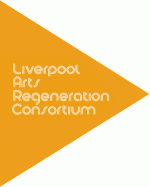The Bluecoat
 Liverpool’s creative hub, the Bluecoat showcases talent across visual art, music, dance, live art and literature.
Liverpool’s creative hub, the Bluecoat showcases talent across visual art, music, dance, live art and literature.
As the most historic building in Liverpool’s city centre, the Bluecoat has four galleries. It houses a creative community of artists and businesses and runs a participation programme with local communities.
In March 2008, the revered arts centre re-opened after a £14 million re-development by Rotterdam architects Biq Architecten with a stronger mission than ever to engage, innovate and excel.
The Bluecoat believes everyone can craft and be creative and it is our aim to provide a space where creativity can flourish and be shared.
The Bluecoat provides a creative hub for people to meet, talk, work, perform, question, create, craft, display and enjoy themselves. And a relaxing garden situated at the rear provides the ideal location to enjoy a beer, wine or soft drink in the summer. The Bluecoat also has Explore, a set of free family craft activities taking place over the weekend.
Dating from the early 18th century, the building’s architectural importance is illuminated by its UNESCO world heritage and Grade One listed status.
The Bluecoat has a rich artistic history. Augustus John was associated with the Bluecoat and early exhibitions included the first Post Impressionists show, which came to Liverpool in 1911 following an earlier showing in London organised by critic Roger Fry. It featured works by Picasso, Cézanne, Van Gogh, Matisse and Gauguin, exhibiting alongside British artists for the first time.
The building has an equally distinguished history in the performing arts, from visits by Stravinsky, Bartok and Britten, to leading jazz and rock players such as Sun Ra, Captain Beefheart and John Surman, to contemporary composers like Michael Nyman and Gavin Bryars, and dancer Michael Clark, or live literature from Doris Lessing, the Last Poets and Benjamin Zephania.
Yoko Ono had her first paid performance at the Bluecoat in 1967, around the time that she met John Lennon. We were delighted when Yoko returned to the new performance space in 2008 for a special performance to celebrate the reopening of the building.
Those popping up to our sprawling Upstairs bistro will see a huge vinyl depicting Yoko’s sixties performance.
The Bluecoat is now home to over 30 creative industries including artists, graphic designers, small arts organisations, craftspeople and retailers. Many of these are situated in the areas of the building which are not open to the public. Our longest standing occupier is the Bluecoat Display Centre which celebrated its 50th anniversary in 2009 and sells the best in UK crafts.
The recent redevelopment, completed in 2008, saw the south east wing rebuilt however into a purpose built arts wing complete with four galleries hosting contemporary art created by international, national and local artists with the exhibitions changing approximately every two to three months.
Despite hosting such luminaries such as the fore mentioned Van Gogh and Picasso the building’s creative heritage is not just about major figures. Many artists have presented their work here at an early stage in their career, including several, for instance, who went on to win the Turner Prize, whilst literally hundreds of artists and creative organisations have been supported in different ways at the Bluecoat. Many more individuals have acknowledged a connection to the building, including George Melly, brought as a child to Sandon fancy dress parties, and Simon Rattle who came here for violin lessons.
With the new arts wing, reorganisation of interior spaces and access improvements, this represents the most significant change in the Bluecoat’s long history.
Alongside the physical changes to the building, the Bluecoat now offers a different experience for people who use and visit the building to engage with art. Creativity, from production to consumption, will be at the heart of everything you experience at the Bluecoat. Support from Arts Council England, the Heritage Lottery Fund, North West Regional Development Agency and the European Regional Development Fund, and from trusts, foundations and donors, has enabled the Bluecoat to transform itself into a building ready to face and survive the next 300 years.
The Bluecoat is an arts venue that has built a substantial reputation for the work it has done and the way it has always changed to be the role model for its time.
